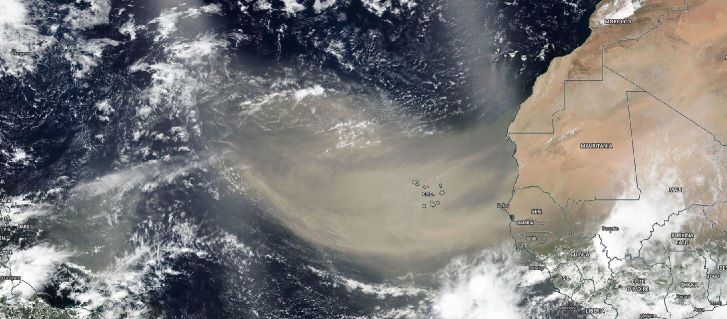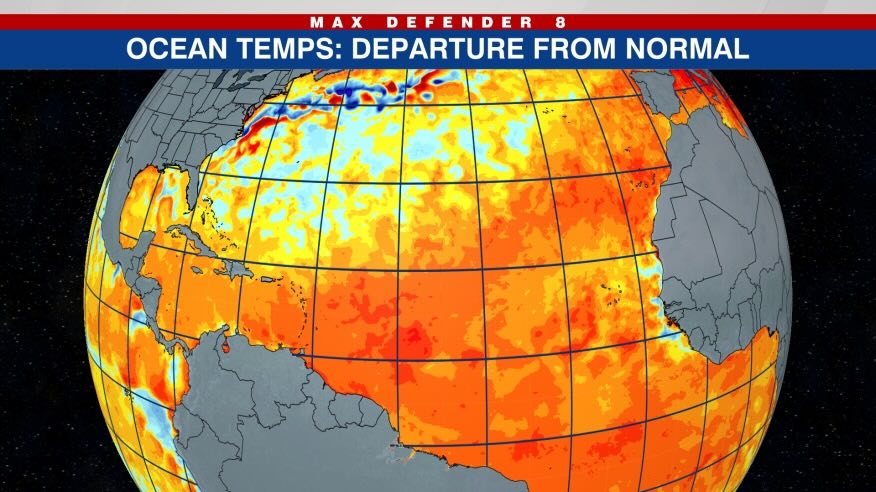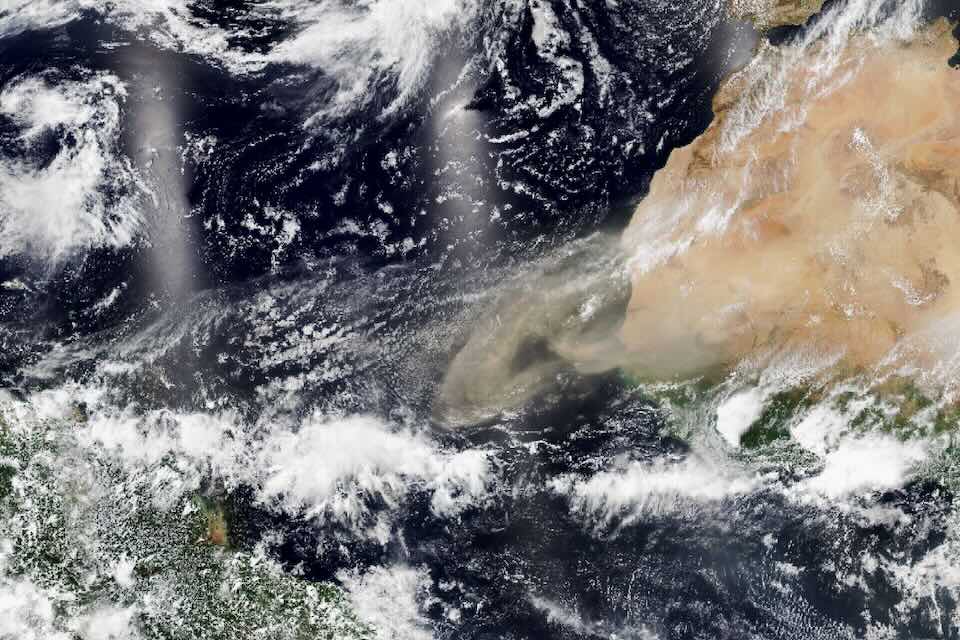The vast expanse of the Sahara Desert blows more than just sand. Every year, trade winds carry millions of tons of dust particles westward, creating a dusty haze known as the Saharan Air Layer (SAL). This layer stretches across the Atlantic Ocean, impacting everything from air quality to marine ecosystems. But perhaps its most significant influence lies in its surprising effect on Atlantic hurricane formation.
For decades, scientists have observed a fascinating link between the SAL and hurricane activity. While the warm waters of the Atlantic fuel hurricanes, the presence of Saharan dust can act as a natural inhibitor, suppressing tropical storm development. This topic is relevant now because the Atlantic hurricane season 2024 has started, so let’s dive deeper into the science behind this phenomenon.
 Image source: NOAA
Image source: NOAA
How Does Saharan Dust Impact Hurricanes?
The table below shows a summary of its impact. Later in this article, we will take a closer look at each of these factors.
| Factor | Effect on Hurricane Formation |
|---|---|
| Reduced solar radiation | Cooler sea surface temperatures |
| Increased cloud cover | Potentially cooler SSTs |
| Stronger trade wind inversion | Suppressed rising air and convection |
| Increased wind shear | Disrupted storm development |
Cooling the Seas: A Dusty Shield
Hurricanes are fueled by warm ocean temperatures. The warmer the water, the more energy a tropical cyclone can extract to power its development and intensification. Saharan dust plays a crucial role in regulating these temperatures.
Dust particles act like tiny mirrors, reflecting sunlight into space. This reduces the amount of solar radiation reaching the ocean surface and thus hinders its ability to warm. Studies link increased dust presence and cooler sea surface temperature (SST) in the Atlantic, especially during the peak hurricane season months (July-August-September).

While the dust’s reflective properties cool the ocean, it can also influence cloud formation. Some research suggests dust particles might act as cloud condensation nuclei, leading to the formation of low-level clouds. Such a Saharan dust cloud, in turn, can further block sunlight, contributing to cooler SSTs.
Disrupting Atmospheric Stability
Beyond its impact on ocean temperatures, Saharan dust also disrupts the atmospheric conditions necessary for hurricane formation in two ways:
Stronger Trade Wind Inversion
The trade winds create a temperature inversion in the lower atmosphere, with warm air above cooler air. This inversion acts as a cap, trapping the warm, moist air essential for hurricane development near the ocean surface. Dust particles within the SAL absorb solar radiation, heating the air within the inversion and strengthening the cap. This makes it more difficult for rising air and convection, key ingredients for storm formation, to occur.
Increased Wind Shear
The presence of the SAL can also introduce strong vertical wind shear: a change in wind speed or direction with height. Strong wind shear disrupts hurricane growth by blocking the essential upward movement of warm, moist air.
The Saharan Shield: Not Impenetrable
It’s important to remember that the SAL’s influence is not absolute. Here are some factors that can weaken its suppressive effect on hurricanes:
The Timing of Dust Outbreaks
The impact of the SAL depends on the timing of dust outbreaks relative to tropical storm development. A thick dust plume in the early hurricane season (June-July) can significantly suppress activity. However, later in the season (August-September), as water temperatures peak, tropical storms may become strong enough to overcome the dust’s dampening effects.
The Strength and Location of the Dust Plume
The concentration and location of the dust plume also play a role. A more concentrated plume will have a stronger suppressive effect. Dust outbreaks heading north over the Atlantic affect hurricane formation less than those reaching the Caribbean and Gulf of Mexico, key areas for tropical cyclone development.
 Image source: NASA
Image source: NASA
Natural Variability in Hurricane Activity
Even in the absence of the SAL, Atlantic hurricane seasons exhibit natural year-to-year fluctuations in activity. Сomplex atmospheric and oceanic factors influence these fluctuations, making it difficult to isolate the precise role of the SAL in any given season.
A Complex Dance: Dust, Wind, and Hurricanes
The interplay between Saharan dust, ocean temperatures, and atmospheric conditions paints a complex picture of hurricane formation in the Atlantic. While the SAL acts as a natural brake on storm development, its influence still depends on various factors. Understanding this intricate dance between dust and storms is crucial for improving hurricane prediction models and preparedness efforts. Ongoing research into the SAL’s impact on hurricanes is crucial as climate change may affect weather patterns and dust storm strength, shaping future Atlantic hurricane seasons.






